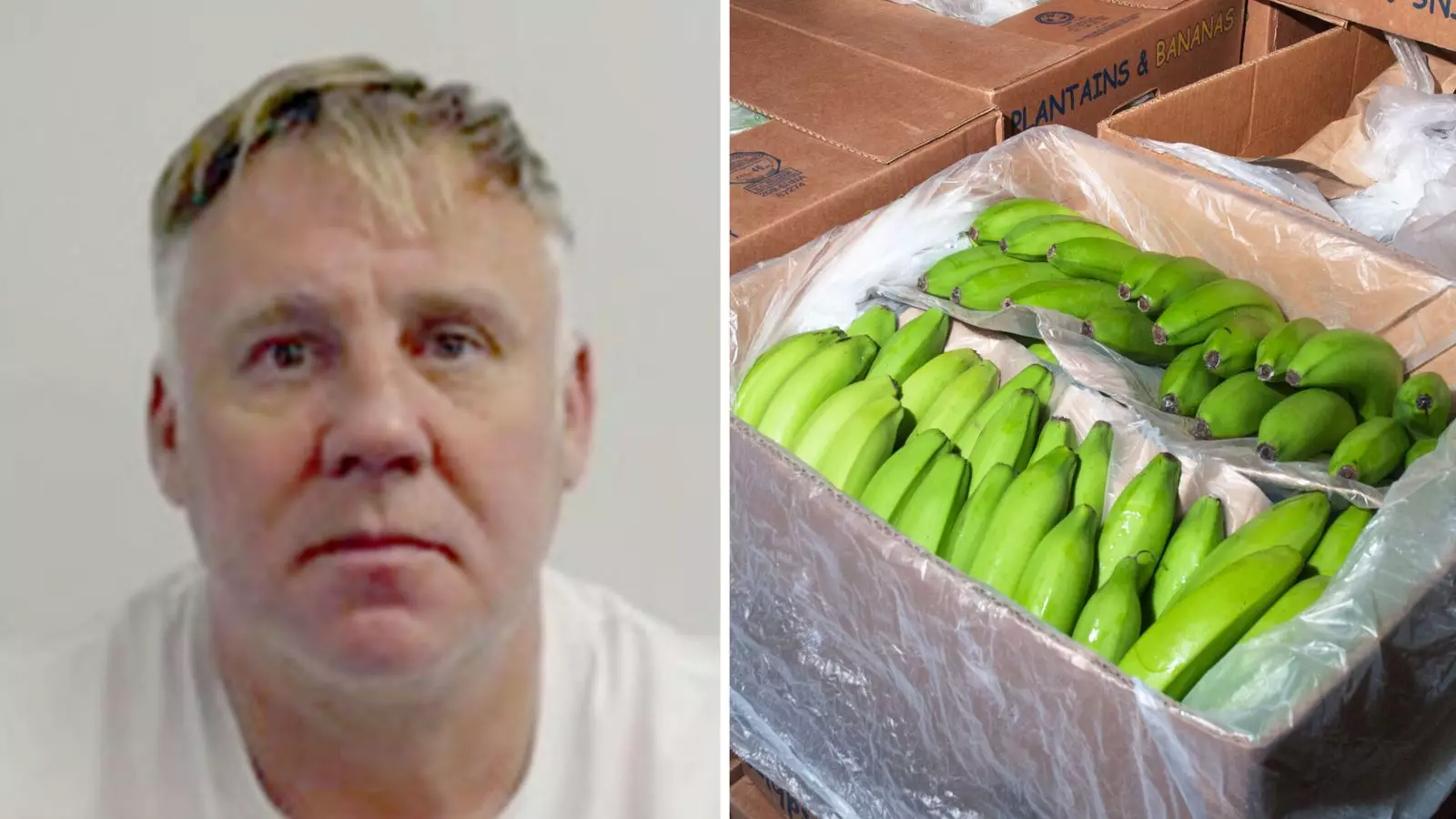In recent years, the United Kingdom has seen an alarming increase in organized crime, with drug trafficking at the forefront of this illicit scenario. One of the most notorious figures to emerge from this underworld is Jamie Stevenson, also known by his ominous moniker “Iceman.” His recent conviction marks not just the end of his own criminal saga but serves as a stark illustration of the sophisticated networks operating beneath society’s surface. Stevenson was sentenced to 20 years in prison for orchestrating the importation of nearly a tonne of cocaine concealed within a shipment of bananas from South America.
A Mastermind’s Scheme: Operation Pepperoni
The plot, dubbed “Operation Pepperoni,” was a far-reaching investigation that involved multiple law enforcement agencies, including the National Crime Agency (NCA) and Police Scotland. It was initiated after authorities intercepted a staggering 952 blocks of cocaine, which had been artfully hidden in 119 foil packages. The drugs were addressed to a Glasgow fruit merchant, reflecting the cunning methods employed by traffickers to infiltrate legitimate businesses.
The operation placed a spotlight on the escalating complexity of drug trafficking operations, highlighting how drug lords like Stevenson exploit unsuspecting industries to facilitate their illegal activities. The cannabis and cocaine industries themselves have shown a remarkable capacity to adapt and innovate in order to circumvent law enforcement, and the estimated value of this cocaine haul, hovering around £100 million, illustrates the immense profits these networks aim to secure.
Stevenson’s criminal activities have been likened to the infamous fictional mafia boss portrayed in HBO’s acclaimed series, The Sopranos. Graeme Pearson, then-director general of the Scottish Crime and Drug Enforcement Agency, drew parallelisms between Stevenson’s operations and the running of organized crime as depicted in the show. This association speaks volumes about the intricate web woven by organized crime syndicates: they operate with a surprising level of professionalism, secrecy, and brutality that can sometimes seem straight out of a script.
His earlier sentence for money laundering reinforces the notion that Stevenson’s criminal oeuvre is not a recent endeavor. He had previously come under law enforcement scrutiny during Operation Folklore, where sophisticated tactics like electronic surveillance were utilized to dismantle his network. These persistent challenges faced by authorities highlight the sort of resilience that organized crime exhibits, often leading to setbacks alongside successes.
Stevenson’s opulent infamy eventually led him into deeper peril. Following the discovery of an alleged etizolam pill factory in Kent, he fled the country, believing he could evade capture. However, his skin-of-the-teeth evasion came to an end when international law enforcement efforts caught up with him, ultimately leading to his arrest while jogging in the Netherlands. His swift extradition to Britain illustrates the dedicated global manhunt that ensnared a once-elusive fugitive.
The irony here serves as a cautionary tale for other criminals: no matter how elaborate your escape plan may be, the long arm of the law has become increasingly efficient as agencies better cooperate internationally. In an age characterized by digital trails and sophisticated forensics, the supposed anonymity of organized crime is rapidly eroding.
Brotherhood of Crime: Co-defendants and the Fabric of Networks
Stevenson’s story is further complicated and darkened by the involvement of numerous co-defendants. Individuals like Paul Bowes and others linked with the enterprise were sentenced alongside him for their roles in the broader drug distribution network. Bowes’ six-year sentence serves to underline the widespread impact of such criminal enterprises—not just centered around a single character but thriving through a convoluted support system of allies and accomplices.
The sentences handed down, ranging from a few years to over two decades for various participants, shine a light on the comprehensive ramifications of organized crime—a looming threat to both society and public health. With other entities like Lewis Connor being implicated for arson connected to this criminal nexus, it begs the question of how many more lives and livelihoods such organizations can jeopardize.
Jamie Stevenson’s downfall represents both a personal defeat and a broader victory for law enforcement in their battle against organized crime. As the authorities continue their relentless pursuit of these hidden networks, it is essential for society to remain vigilant against the allure of easy money and the facades that criminal enterprises use to operate just under the radar. This case serves as not only a wake-up call but also as a compelling narrative about the intricate links between legitimate businesses and the darker alleys of organized crime in the UK.


Leave a Reply